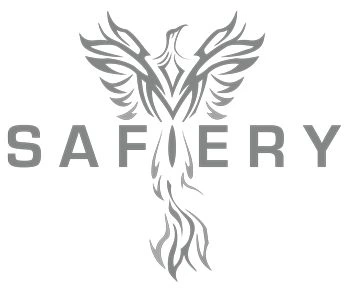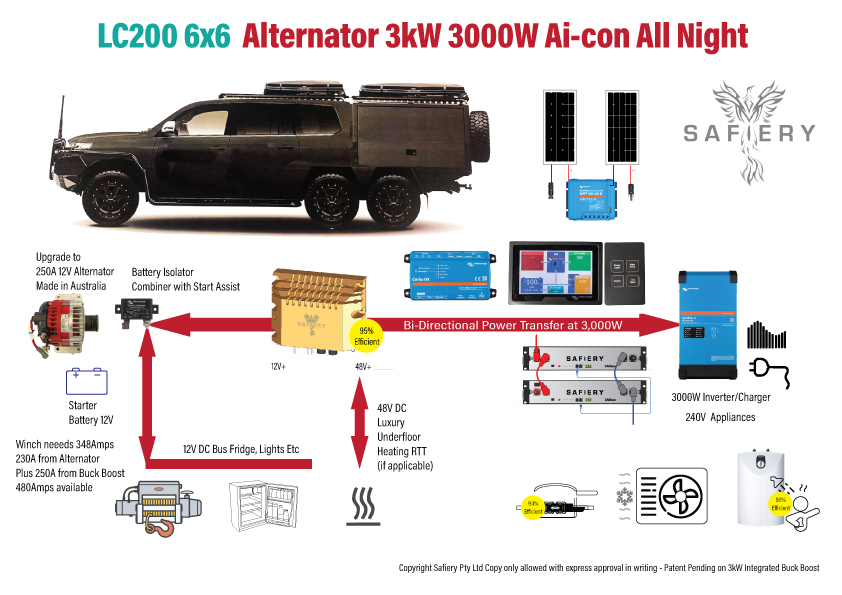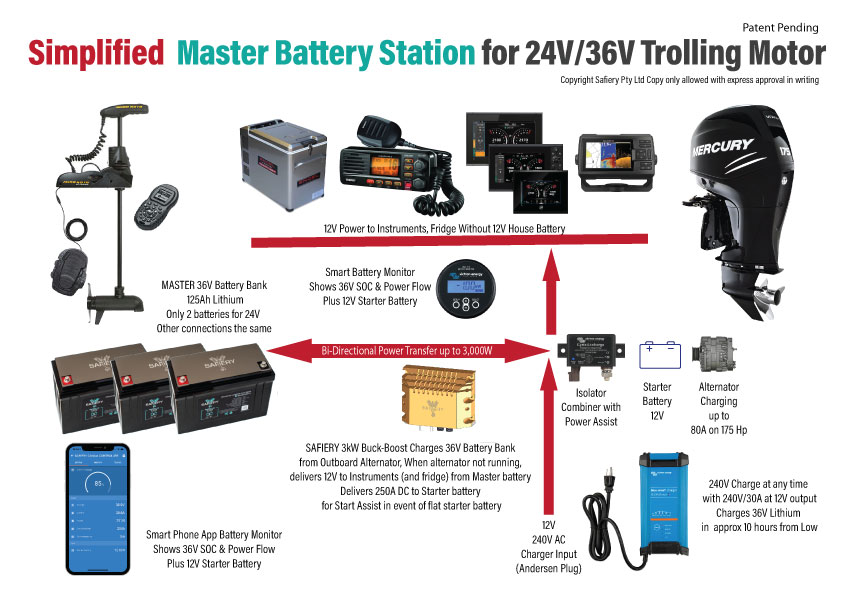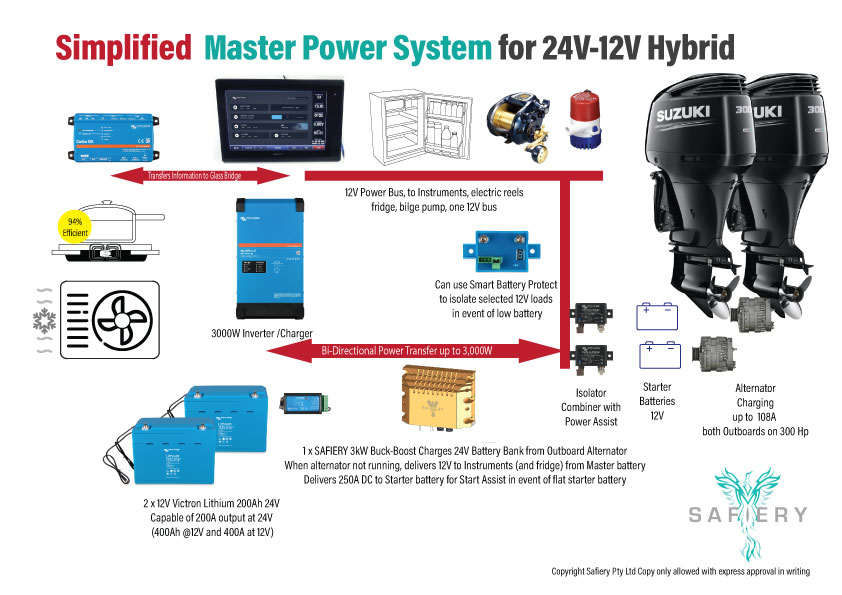 Multiple Battery Systems
Multiple Battery Systems
Traditional Separation for Protection
It is not uncommon to see a 4WD well prepped with 3 battery systems. Sometimes there is a fourth: charging a towed caravan or camper trailer. These systems are all fed off the one alternator.
The Starter battery is designed for high cold cranking amps. It is a different lead plate design to a stored energy battery. It has a larger number of thin lead plates to produce a high amount of power. A stored energy battery has a fewer number of much thicker lead plates. Starting a vehicle doesn’t use a real lot of energy, but it needs a lot of power (amps). If used for fridges or other 12V loads when the engine is not operating, a starter battery will quickly fail. This is partly why boats with one battery system for starting, instruments and fridge find their battery fails in short time. Whilst lithium batteries are superior energy storage batteries, we do not recommend them as starter batteries. The reason being is that if their BMS calls for a “stop charge”, the alternator will have a “load dump” which may cause damage and systems to fail. Stick to lead acid for starting batteries.
A second battery in the engine bay may be used as either a stored energy battery or a backup starter battery or for both. If a large 12,000lb winch is fitted, up to 400Amps may be required. If the Alternator is 150Amp capacity, then another 250A is required from the second battery and /or the starter battery. Typically, the winch has to be operated in a start/ stop manner as this is just too much power for most dual battery systems with factory supplied alternators.
A third battery may be in the rear for the fridge and other devices. This will always be a stored energy battery. In this article, we assume it will be a Lithium battery. There may be more than one lithium battery.
Mutiple Battery Technologies
In the scenario above, there are 3 different types of batteries and if towng, they may be a fourth in the camper trailer/caravan. This becomes a very complex charging scenario with multiple DC to DC’s. When running in parallel, multiple DC to DC’s will have a big load on the alternator when idling. This may cause the alternator to overheat and fail eventually.
If the rear battery is similar AGM technology to the second engine bay battery, then ony one DC to DC may be required and the result is a straightford system. This was the domain of an Australian manufacturer for years, now usurped by new technology.
AGM batteries are very limited in capacity and more than double the weight. The benefits of Lithium are so significant for stored energy. Read our article on CANbus Lithium to gain insight into the future.
Multiple DC to DC’s with Different Battery Chemistries
It is common to find dual DC to DC chargers with different charging profiles to match different chemistries. They have to be kept small because of the reason given above. This is fine for small stored energy systems.
Larger Stored Energy Systems
With a larger capacity alternator, larger lithium battery banks can be charged quickly with a Safiery Alternator Controller. If the lithium battery will accept it, up to 220-250A charge current will get a 200Ah lithium to 100% SOC (State of Charge) in less than an hour from 20% SOC. At the same time, it can keep the second battery in the engine bay charged using a Victron Cyrix battery combiner. Also at the same time, it will keep the starter battery charged. The reason is very simple. Lithium batteries have a very low internal impedence (resistance) and accept charge faster than lead acid. So they will be the first to absorb the power from the alternator. Once full, the alternator controller switches into float mode and isolates the lithium battery using a FET device that does not alow the highly charged Lithium battery current to flow back to the engine bay. The Alternator controller then operates in a post float mode and charges the lead acid chemistry to 100% (if that is required). There are still 3 batteries in the system. The winch may still not get enough power to operate continuously. So not all problems solved.
All Problems Solved
The 3kW Buck Boost will transfer up to 250A from the alternator to a higher voltage battery system. It can be 24V, 36V or 48V system. For vehicles, we prefer 48V system. For boats with trolling motors or high voltage bow thrusters, it may be 24V or 36V.
However, the power can also reverse in less than 25ms and deliver 250A at the 12v end. This solves the problem with winch power as there is now up to 500A available if using a 250A alternator at 12V.
This means just two battery systems: Starter battery and Rear Lithium Battery System. Charging the towed camper trailer/ caravan can also occur at the same time through an anderson plug from the 12V pin connection through to the rear of the vehicle. The camper trailer/caravan will most likely have its own DC to DC of a smaller size and will control the charging of that system. Simply leave that wired up and plugged in as it is.
In fact, there is the choice of continuing to charge the camper trailer/ caravan 12V system from the vehicle’s Canopy 48V Lithium battery when camping. Simply turn on the 3kW Buck Boost and it will provide 12V power through the andersen plug until it is fully charged or the 48V battery is low. Then with the camper trailer/caravan in camp, a short drive the following day will charge the 48V lithium battery very quickly. Power is then available to continue charging the camper trailer/ caravan.
If you want to run the air-conditioner all night, or simply use induction cooking in the camper trailer/caravan then simply plug the 240V power lead into the inverter conected to the 48V Lithium system. Safiery supplies a 3000W or 5000W inverter with their 48V systems and this then becomes a mobile power plant to support camper trailer /caravan. It is just the same as being at a powered site!
There is really no need to isolate the starter battery, however it is a small price for a Victron Cyrix battery combiner which auto-isolates. These units have “start assist”. When pressed, up to 250A can flow from the 3kW Buck boost back into the starter battery and very quickly recover a flat battery (unless the cells have collapsed). This system now ticks all the boxes.
Use your 4WD as a power station for your caravan or camper trailer “plug in and run 240V”.
Boating Systems with 24V or 36V Trolling Motors
The same principles apply. The 36V battery will charge from the outboard alternator and at the same time supply 12V back down through the buck boost for the boats instruments and fridge. Very, very simple solution.






